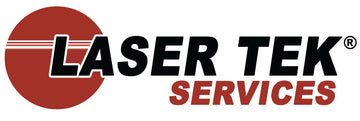Acquiring a laser printer is not the end all, operating it long-term is what really matters. Surveys indicate that keeping the printer running, exceeds 7 times the acquisition cost. What makes users hesitate is the cost of the replacement printer cartridge that dictates the TCO (total cost of ownership) of the printer. Therefore, it is mandatory for users to check thoroughly the printer specs and confidently take home the unit that can satisfactorily meet the demand without the frills that only add to the cost.
Will TCO help users choose the right laser printer?
Absolutely! TCO is the sum of the expenses shelled out for the lifetime of the printer. TCO includes not only the total number of print cartridges but also the reams of paper that will be used for printing as well as the cost of energy to operate as well as the acquisition cost. That is why printer specs are so important because failure to capitalize on it will only mean non-manageable printing expenses. Hereunder are printer features that need to be considered in the purchase of a printer.
Printer document turnout speed. Speed is a quantifying factor, simply because it is an indication of the number of documents that can be processed in a given period. It goes to say that if the printer is a speed monster, the drive motor is huge and therefore affects energy usage that reflects in the upfront cost of the printer. Thus, it is common sense to pick the printer suited to the requirement.
Average monthly print volume. This determines the printer’s monthly duty cycle, meaning that if the print volume is only 3,000 documents monthly, the choice becomes inconsistent if the acquired printer can churn out 100,000 copies per month. Certainly, with this print capability, the printer will really be expensive.
Document’s print resolution. If fine print quality is required, printer specs resolution of 1200 x 1200 is the only option. Most laser printers can only manage a maximum of 600 x 600 dpi (dots per inch) and to reach the required print quality level, the dots/dpi are interpolated, optimized and manipulated.
Scan resolution. Just like print resolution, it can be manipulated and interpolated to optimize the dpi – a printer that can scan at 300dpi is already typical because going beyond affects the scanning speed.
Automatic duplex printing feature. Printing on both sides is necessary in the choice of the printer because it saves a lot of paper.
Yield in printed pages. It pertains to the capacity of the print cartridge and is the single factor that determines the cost per page (CPP) of the printed document. A cartridge with a 10,000 page yield will deliver a lower CPP compared to one that can only print 2000 pages; although the cost of the cartridge will also be a quantifying factor.
Starter print cartridges are not much of a factor because it comes standard with new printers. The determining factor will really be the regular replacement cartridges.
Next time you are out shopping for a laser printer, remember to choose the model with printer specs that really matters – no more, no less!





